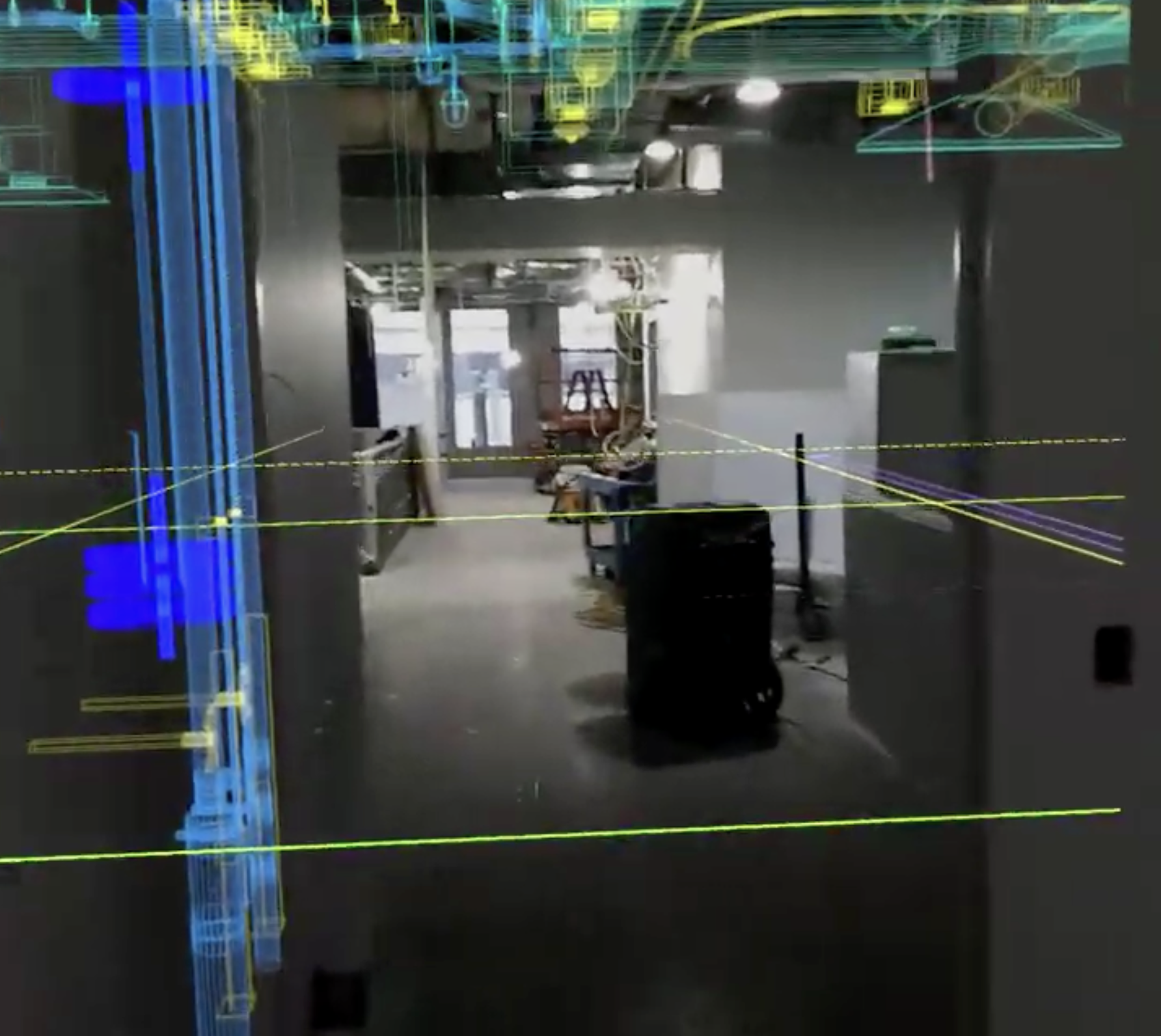Spatial Computing Takes Off at JFK The New Terminal One
By utilizing Argyle's BIM-to-Augmented Reality technology, a prominent airline logistics company is bringing unparalleled efficiency and precision to the new Terminal One at JFK International Airport. Impacting an estimated 2,000 bags every hour, the installation of the new baggage handling system (BHS) is a logistically challenging and time-critical feature of the terminal.
With efficiency as the goal, Argyle partnered with a leader in process automation to create visual solutions leveraging the Building Information Model (BIM) to improve time to competency and speed of installation.
Argyle converts the BIM into a hologram positioned directly on site. Using Argyle's software with the Magic Leap 2 and iOS, this partnership has revolutionized traditional construction methods with augmented reality. The result, faster and more accurate jobsite operations, setting a new standard in the industry.

The use of Argyle leverages existing models and places them on the jobsite in augmented reality for a real-time comparison of the design and the current state of the build. Use of Argyle on site led to several immediate benefits that the JFK T1 team found impactful:
- Installation Verifications: AR overlay of the BIM with Argyle helped to mitigate onsite rework. The overlay allowed site management to ensure that systems, such as header steel and seismic bracing, were installed without future clashes.This improved installations across disciplines, including downstream effects on third-party work.
- On-site Clash Detection: The building information model, perfectly overlaid on site, helped the team understand how equipment interacted with real-world conditions. This reduced engineering issues before installation and resolved on-site clashes in real time without creating additional problems, allowing for faster, more informed decisions.
- Improved Site Previews: The coordinated model in AR ensured that as-builts and IFC sets were accurate and true to site conditions. This reduced engineering rework and increased site support by finalizing correct drawings before release rather than during installation.
- Leading Technological Solutions: Utilizing augmented reality not only facilitates easier communication with the customer regarding approvals but also demonstrates a commitment to high-value solutions and superior product quality.
It hasn’t always been easy to use augmented reality in the field, but hardware and software advancements have made AR in construction easier and faster year after year. Building teams investing in BIM and digital coordination benefit most from augmented reality in construction.
When considering AR, consider the following:
1. Ease of Upload: Argyle allowed the airline logistics team to export models from Navisworks and Revit. This helped keep up with design changes and continually monitor their impacts.
2. Ease of Alignment: Argyle lets site users calibrate to known authorities quickly and easily in the app. Setup is simple and familiar.
3. Ease of Implementation: How quickly is ROI achieved? After upload, site users see immediate value.
By allowing teams to see their BIM content, align it with desired spaces, and visualize job sites without obstructions, AR with Argyle is often more efficient than communicating through traditional photos and plans. Minimizing rework on site and maximizing participation from off-site stakeholders through AR visualizations helps reduce risks and ensure a safer, more efficient construction process.

The adoption of augmented reality at JFK T1 underscores the project team’s dedication to pioneering technological advancements and improving industry standards. As these technologies continue to prove their value, they set a new benchmark for future construction projects. The success at JFK T1 serves as a testament to the power of augmented reality in driving excellence and efficiency across the industry.
Could augmented reality be the key to revolutionizing your next airport construction project? Discover more about how Argyle can transform your project at argyle.build.



